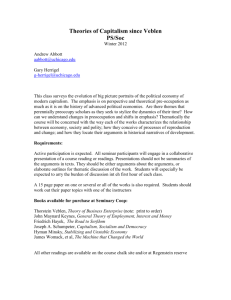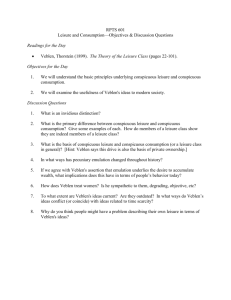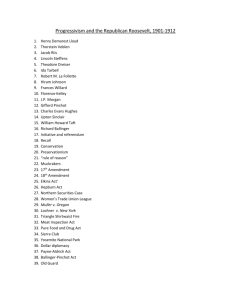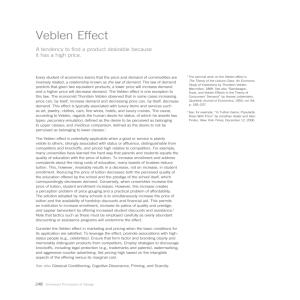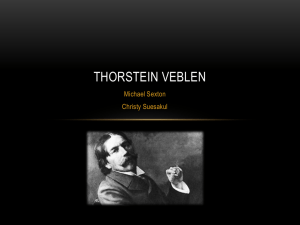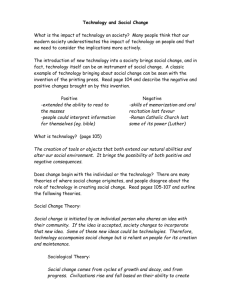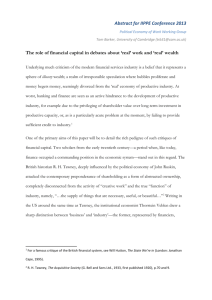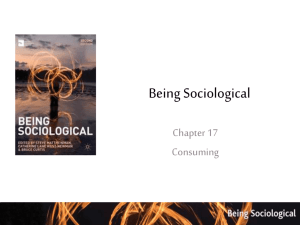Authors and Critics
advertisement
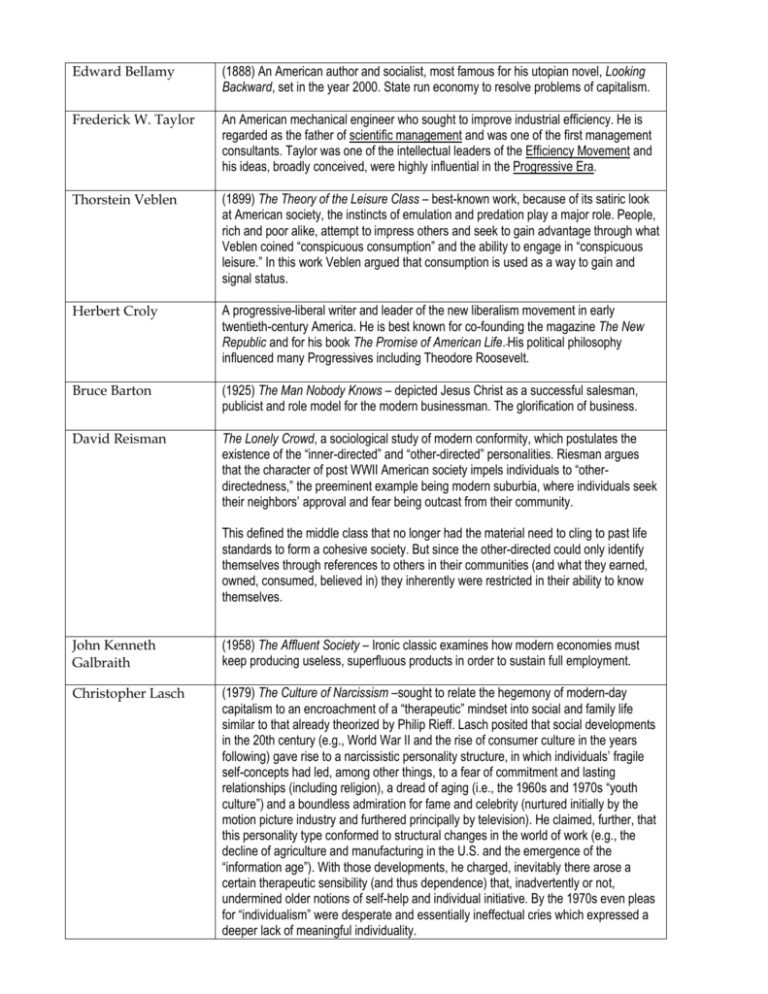
Edward Bellamy (1888) An American author and socialist, most famous for his utopian novel, Looking Backward, set in the year 2000. State run economy to resolve problems of capitalism. Frederick W. Taylor An American mechanical engineer who sought to improve industrial efficiency. He is regarded as the father of scientific management and was one of the first management consultants. Taylor was one of the intellectual leaders of the Efficiency Movement and his ideas, broadly conceived, were highly influential in the Progressive Era. Thorstein Veblen (1899) The Theory of the Leisure Class – best-known work, because of its satiric look at American society, the instincts of emulation and predation play a major role. People, rich and poor alike, attempt to impress others and seek to gain advantage through what Veblen coined “conspicuous consumption” and the ability to engage in “conspicuous leisure.” In this work Veblen argued that consumption is used as a way to gain and signal status. Herbert Croly A progressive-liberal writer and leader of the new liberalism movement in early twentieth-century America. He is best known for co-founding the magazine The New Republic and for his book The Promise of American Life. His political philosophy influenced many Progressives including Theodore Roosevelt. Bruce Barton (1925) The Man Nobody Knows – depicted Jesus Christ as a successful salesman, publicist and role model for the modern businessman. The glorification of business. David Reisman The Lonely Crowd, a sociological study of modern conformity, which postulates the existence of the “inner-directed” and “other-directed” personalities. Riesman argues that the character of post WWII American society impels individuals to “otherdirectedness,” the preeminent example being modern suburbia, where individuals seek their neighbors’ approval and fear being outcast from their community. This defined the middle class that no longer had the material need to cling to past life standards to form a cohesive society. But since the other-directed could only identify themselves through references to others in their communities (and what they earned, owned, consumed, believed in) they inherently were restricted in their ability to know themselves. John Kenneth Galbraith (1958) The Affluent Society – Ironic classic examines how modern economies must keep producing useless, superfluous products in order to sustain full employment. Christopher Lasch (1979) The Culture of Narcissism –sought to relate the hegemony of modern-day capitalism to an encroachment of a “therapeutic” mindset into social and family life similar to that already theorized by Philip Rieff. Lasch posited that social developments in the 20th century (e.g., World War II and the rise of consumer culture in the years following) gave rise to a narcissistic personality structure, in which individuals’ fragile self-concepts had led, among other things, to a fear of commitment and lasting relationships (including religion), a dread of aging (i.e., the 1960s and 1970s “youth culture”) and a boundless admiration for fame and celebrity (nurtured initially by the motion picture industry and furthered principally by television). He claimed, further, that this personality type conformed to structural changes in the world of work (e.g., the decline of agriculture and manufacturing in the U.S. and the emergence of the “information age”). With those developments, he charged, inevitably there arose a certain therapeutic sensibility (and thus dependence) that, inadvertently or not, undermined older notions of self-help and individual initiative. By the 1970s even pleas for “individualism” were desperate and essentially ineffectual cries which expressed a deeper lack of meaningful individuality.


